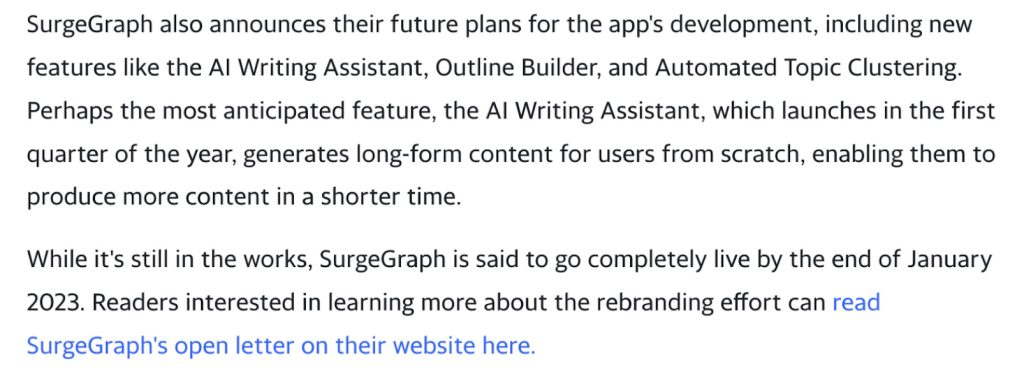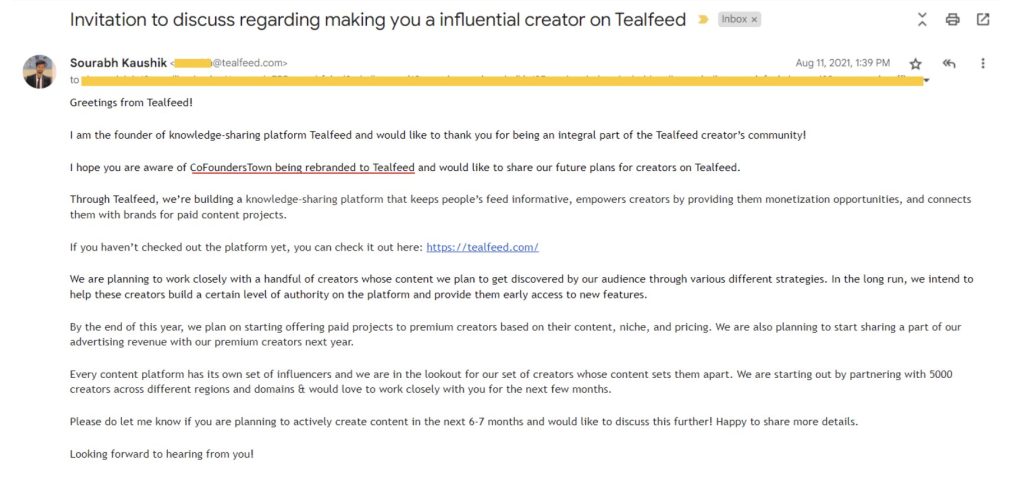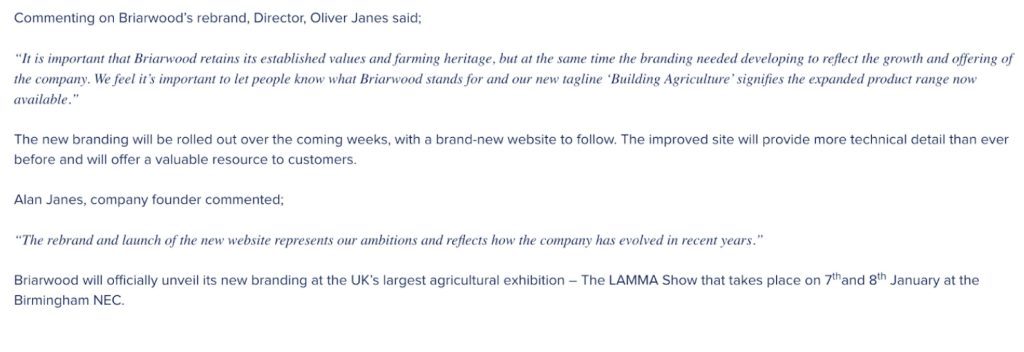There are a million things to think about when you embark on a rebrand.
You may have the best new branding, but if it isn’t implemented well or properly rolled out, it won’t even stand a chance to bring the positive changes or impacts you want it to.
Thus, announcing your rebranding to the world (or at least, to your target market) should take so much more than creating a freshly-new brand identity and marketing materials.
Writing a rebranding press release can also create huge awareness and make your new brand sit well with the general public.
💡 Read Digital PR Explained: Best Strategies and Tools
A rebranding press release is a formal announcement that can be distributed to media outlets, your current and potential customers, as well as other key audiences. The main purpose of it is to generate media coverage and announce the new brand to your target market.
Here are a few tips on how to write a great rebranding press release:
1. Choose a Catchy Headline
The headline is the first (and sometimes only) thing people will read in your press release, so it needs to be attention-grabbing and informative. The headline should include the new brand name or a change in the brand name, so people will know what the press release is about at a glance.
Optimize your headline by following the copywriting basics. The rule of thumb is to make it clear, concise, and interesting. Avoid it being stuffed full of hyperbole and exaggeration. In essence, it should be your entire story distilled into a few words.
Below is an example from Intuiface. The headline they used for the rebranding press release is straightforward. No fluff involved.

2. Include the 5Ws in the First Paragraph
In the first paragraph, make sure to answer all questions by including all the essential information about your rebranding:
- who (the company)
- what (the new brand)
- when (the launch date)
- where (location of headquarters/target market)
- why (reason for the rebrand)
By doing so, you give readers a general overview of your rebranding without them having to read the entire press release.
Also, note that the 5W’s are traditionally the foundation of journalism, so by including them in the first paragraph, you make it easy for journalists to write their own stories based on your press release. To make it sound professional, use formal writing words.
3. Give More Details
After the first paragraph, use the remainder of the press release to go into more detail about the changes. Here are what you better give details about:
#1 Rebranding changes
Give an overview of the rebranding journey by explaining what inspired the new branding and how it reflects the company’s values.
Contrast the old and new brand
Show the before-and-after of your rebranding by sharing how the new branding is different from the old one.
You can even include quotes from employees or customers about the changes. But be careful not to come across as negative or dismissive of the old brand.
What is staying the same?
In addition to highlighting what’s new, it’s also important to mention what will stay the same. This helps with continuity for customers and employees during (and after) the transition.
Bring the new brand identity
Highlight significant changes in your rebranding, such as a new logo, website design, company name, product name, etc.
You can add a short explainer video that is less than a minute long to your press release. If you have a lot of things about the new brand identity to uncover, this format will help you sum it all up, just like what Nahan did.

Include links
Make it easy for readers to learn more about your rebranding by including links to the press release. Those links should direct to your website or social media platforms where they can find more information.
Take a look at how SurgeGraph adds a link, just in case their readers need to read their open letter for more information.

#2 Effective date
Rebranding press releases are often published the same day the rebranding will be launched. However, if you want to give people a heads-up or teaser about the changes ahead, you can announce it a few weeks or months in advance.
Just be sure to include an effective date, so people know when the rebranding will take effect.
This is important for employees and customers who need time to adjust, as well as media outlets and analysts who may want to include the news in their coverage. Not to mention, it also builds anticipation and excitement for the launch.
Read Rebranding Products: 5 Tips to Own It

#3 Reason for the rebranding
Be clear about the motivation behind the rebranding. Is it because the company has changed or evolved? Are you targeting a new market? Or are you simply freshening up your image?
Whatever the reason may be, make sure to communicate it clearly in the press release. This helps stakeholders understand and buy into the changes, as well as sets the tone for how they should communicate the news to others.
Meanwhile, for the public, it also helps manage their expectations about the changes.
Read How To Drive Your Business Growth With Media Monitoring
#4 New impact and mission statement
If your rebranding includes a new mission or vision statement, now is the time to share it. This will help people understand what the company stands for and what its goals are moving forward.
The new impacts and missions you bring are the reason why the media should care about your rebranding story in the first place.
Here’s an example from TealFeed (formerly known as CoFoundersTown) reaching out to the media and highlighting their new goals, impacts, and mission statement, to make the story media coverage worthy.

4. Quote from stakeholders
Investors and the public want executives to be transparent about any changes made to a company’s brand. This communication is important in order to gauge how the change will affect different aspects of the business.
If you communicate your goals candidly, investors and the public will understand what you’re doing and be more likely to support your choices.
So, include a quote from the CEO or another key executive in the press release to add credibility and personalize the message. This also adds another level of authenticity and helps build social proof for the changes.

This is your chance to tell your rebranding story directly to the public, so make sure it’s something that truly reflects your company’s journey.
5. Include a boilerplate
For the cherry on top, don’t forget to include a boilerplate at the end of your press release. A boilerplate is a short summary of your company that includes important information such as company name, location, product or service overview, etc.
One thing to bear in mind here, though, is to make sure the boilerplate is up-to-date with your current branding. It means that you need to update it to reflect the new branding, such as the new logo, company name, website address, etc.
This helps the public, reporters, and editors who are looking for more background information on your company.

Conclusion
Now that you have a well-crafted rebranding press release, it’s time to distribute it to your target audience. The best way to do this is through a wire service like PR Newswire or Business Wire. This ensures that your press release will be seen by journalists who are looking for stories to write about.
Rebranding can be a big undertaking, but it’s also an exciting time for your company. By following these tips, you can write a great press release that will generate excitement and media coverage for your new brand.
However, you can’t only rely on the press release to do all the work. Make sure to promote your rebranding across all channels, from social media to PR, so people can learn about your new brand identity.
Adela Belin is a content marketer and blogger at Writers Per Hour. She is passionate about sharing stories with the hope to make a difference in people’s lives and contribute to their personal and professional growth. Find her on Twitter and LinkedIn.


